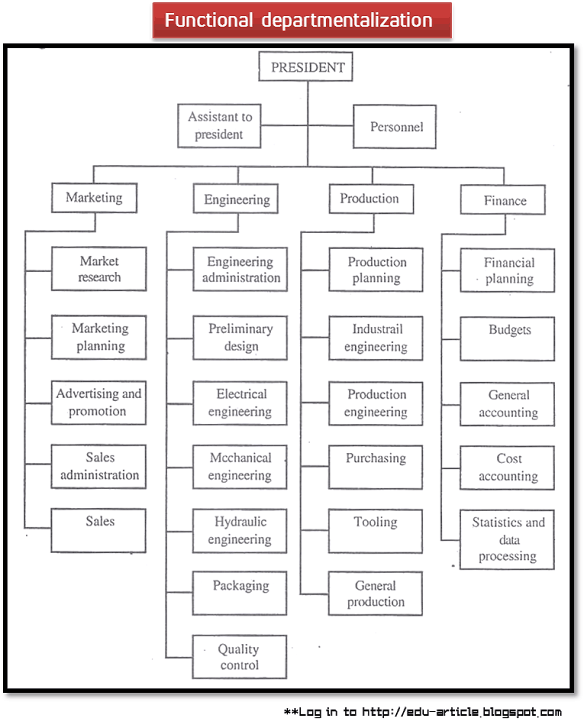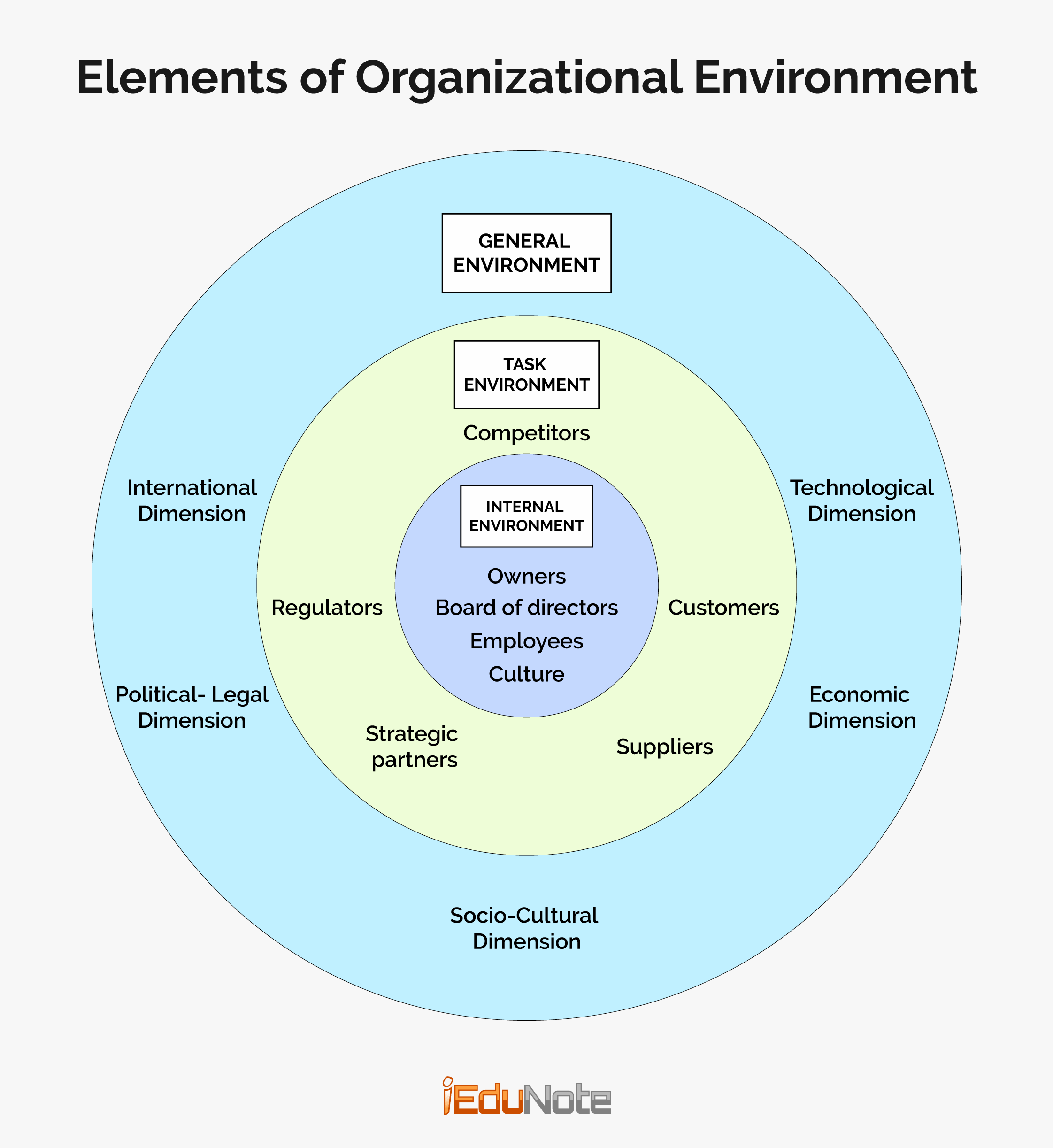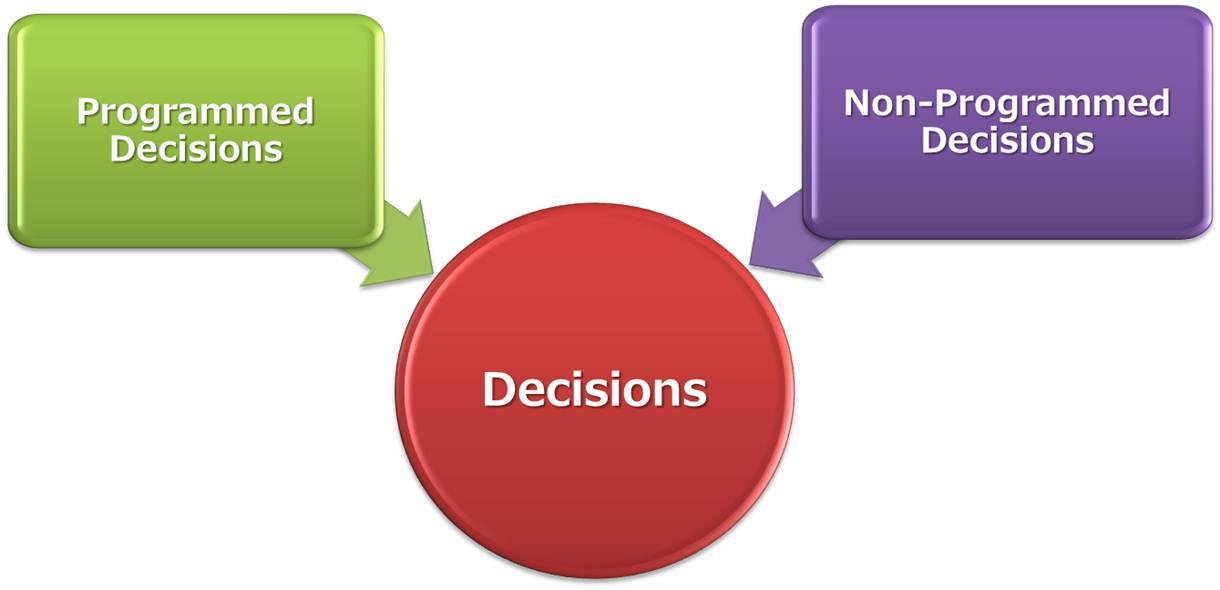This approach is most common in the form of departmentalization. Functional departmentalization groups together jobs which are involving the same or similar activities.
Here; the word function is used to mean organizational functions such as finance and production, rather than the basic managerial functions, such as planning or controlling. Noted economist Oliver E. Williamson termed it as the ‘U- form’ (for unitary) design.
Functional departmentalization allows the organization to staff all important positions with functional experts and facilitates coordination and integration.
However; it also promotes tends to promote centralization. For the organization to operate efficiently in this design there must be considerable coordination across departments.

As mentioned, this is perhaps the most common form of departmentalization. The image shows that marketing, production, engineering, and finance are the four most common functions in most organizations.
‘Personnel’ is another major function in any organization and encompasses recruitment, selection, training, compensation, health and safety, and labor relations.
Advantages of functional departmentalization
- It provides a logical reflection of functions that maintains the power and prestige of major functions.
- Follows principle of occupational specialization.
- Simplifies training and supervisor of the subordinates.
- Furnishes means of tight control at the top.
- Each department can be staffed by experts in that functional area.
- Coordination of activates within the departments is easy.
Disadvantages of functional departmentalization
- Decision making becomes slower and more bureaucratic.
- De-emphasis of overall company objectives.
- Accountability and performance become increasingly difficult to monitor.
- Overspecializes and narrows view¬points of key personnel.
- Reduces co-ordination between functions or departments.
- Responsibility for profits is at the top only.
- Slow adaptation to changes in the environment.
- Limits development of general managers.

